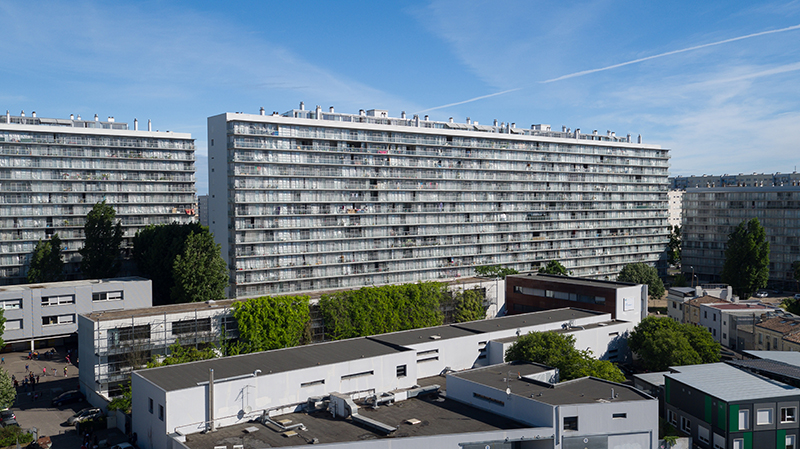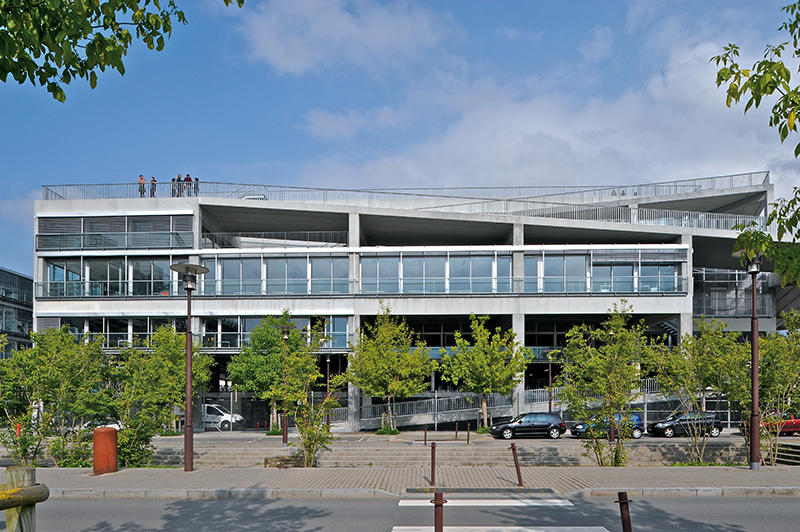French Advocates of Reuse Win the 2021 Pritzker Prize

The qualifications for architectural prizes continue their current shift from dramatic form-making toward environmental and community responsibility – and this is happening worldwide. Striking new evidence of this trend is the naming of two French architects practicing together, Anne Lacaton and Jean-Philippe Vassal, as recipients of this year’s Pritzker Prize, the closest equivalent in the design world to the Nobel Prizes. The 2021 honorees advocate the reuse of existing structures, and they show the world how to do that with exceptional skill.
Lacaton and Vassal do not design new buildings with dazzling configurations in far-flung locations (as their countryman Jean Nouvel, the 2008 Pritzker winner, continues to do). Their work appears mainly in the less tourist-visited parts of France and consists largely of renovating existing buildings and converting them to new uses. As Lacaton states eloquently, “Transformation is the opportunity to do more and better with what already exists. Demolishing is a waste of many things – a waste of energy, a waste of materials, and a waste of history. For us, it is an act of violence.”
The earliest of their works cited in the Pritzker announcement is the Latapie House of 1993 in Floirac, France. For an existing house they applied greenhouse technologies to install a winter garden that yielded a larger residence within a modest budget. Retractable and transparent polycarbonate panels on the east-facing back side of the home admit natural light to the entire interior, enlarge its communal spaces, and improve climate control. Their Cap Ferret House of 1998 is notable for barely disturbing the grove of pines in which it is sited.



Many of their commissions since have been in the rarely-glamorous area of social housing. Their Tour Bois de Prêtre, a 96-unit, 17-story complex in Paris, updates a fading development from the 1960s. Collaborating here with Frédéric Druot, the architects increased the area of every unit by removing the original concrete façade and extending the apartments into weather-protected balconies.


They applied a similar expand-and-adapt strategy to three of the buildings (G, H, and I) at the 530-unit Grand Parc development in Bordeaux, completed 2017 (with Frédéric Druot and Christophe Hutin), nearly doubling unit size and updating all systems without displacing any residents — and at one third the cost of new construction. Notable among their other housing accomplishments are a 53-unit apartment complex in Saint-Nazaire (2011) and the Ourcq-Jaurès student and social housing in Paris (2013).


Projects with a variety of other non-residential programs include the Ecole Nationale Supérieure in Nantes of 2009, where new construction includes many of the same elements that appear in their reuse projects, such as polycarbonate enclosures and sliding doors. Located along the Loire River, the structure includes generous spaces for unspecified uses, a rooftop learning and gathering space, and an auditorium that can open onto the street.



At the Atelier de Préfabrication No. 2, built as a shipbuilding facility from the post-WWII period, the architects were commissioned to create a larger multipurpose facility for a regional collection of contemporary art, FRAC Nord-Pas de Calais (Dunkerque, France, 2013)..They accomplished this not by replacement but by erecting a second building, identical in form with the first. Housing galleries, the new structure can function independently or jointly with the earlier one. Transparent materials provide uninterrupted views through the new to the old. The two components are connected by an internal street located in the void between them.


At the Palais de Tokyo, a museum complex housed in a Paris landmark of the Art Deco 1930s, the architects completed a prominent institutional expansion project in 2012. They transformed auxiliary areas around the established white-cube exhibition galleries and in the basements below them into less limiting spaces where the public can enjoy a variety of art experiences.


Most of the existing buildings these architects deal with are examples of the Modernist architecture of the previous century – not the works from earlier times that concern most preservationists. As the Pritzker announcement says: “The Modernist hopes and dreams to improve the lives of many are reinvigorated through their work,” while responding as well to the climatic, ecological, and social urgencies of our time. In so doing, their approach “renews the legacy of Modernism.”


The prize, which is awarded each year to a living architect/s for significant achievement, was established in 1979 by the Pritzker family of Chicago through their Hyatt Foundation. Awarded annually, it includes a $100,000 grant and a distinctive medal. Its current ten-person jury of design experts includes previous Pritzker honorees from several countries, along with US Supreme Court Justice Stephen Breyer.



